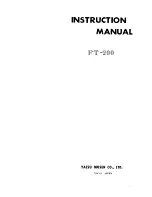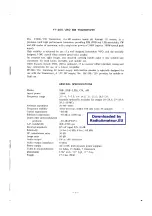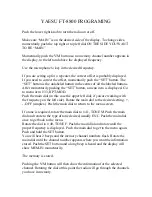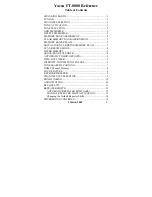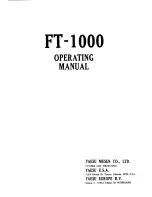
41
Getting Started
Sound Adjustment
• Seat position simulation (SEAT)
(FRONT/REAR and LEFT/RIGHT)
If you sit in the front of a room, you hear more direct
sound from the front speakers. As you move to the
rear, the reflected sound increases. Similarly, the
reflected sound changes when you move from left to
right, and vice versa.
The FRONT/REAR and LEFT/RIGHT parameters let
you control the balance of direct and reflected sound to
simulate your listening position.
In the FRONT/REAR parameter, “F” signifies the front
of the room and “R” signifies the rear. The midpoint
designates the center.
In the LEFT/RIGHT parameter, “L” signifies the left
side of the room and “R” signifies the right side. The
midpoint designates the center.
• Reverberation time (REVERB)
This parameter adjusts the length of time required for
the reverberation (echoes) generated from a given
sound to attenuate –60 dB.
You can choose shorter (S) or longer (L) reverberation
times.
• Low Frequency Extension (LFE) mix level (OTHER)
This parameter lets you attenuate the level of the LFE
(Low Frequency Extension) channel output from the
sub woofer without effecting the level of the bass
frequencies sent to the sub woofer from the front, center
or rear channels via the bass redirection circuitry. The
level can be adjusted in 0.5 dB steps from –20.0 dB to 0
dB (line level). 0 dB outputs the full LFE signal at the
mix level determined by the recording engineer.
Selecting MUTE mutes the sound of the LFE channel
from the sub woofer. However, the low frequency
sounds of the front, center, or rear speakers are output
from the sub woofer according to the settings made for
each speaker in the speaker setup (page 22).
• Dynamic range compression ratio (OTHER)
Lets you compress the dynamic range of the sound
track. This may be useful when you want to watch
movies at low volumes late at night.
OFF reproduces the sound track with no compression.
STD reproduces the sound track with the full dynamic
range as intended by the recording engineer.
0.1 ~ 0.9 allow you to compress the dynamic range in
small steps to achieve the sound you desire.
MAX provides a dramatic compression of the dynamic
range.
• Test tone (TEST)
This parameter emits the test tone and allows you to
check the balance of the speaker levels. See “Adjusting
the speaker volume” on page 23 for details.































